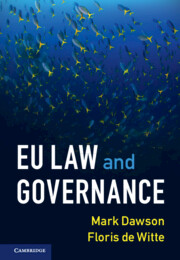Refine search
Actions for selected content:
36885 results in Cambridge Textbooks
Chapter 5 - Ecotoxicogenomics
- from Part I - Approaches and Methods
-
-
- Book:
- Ecotoxicology
- Published online:
- 19 May 2022
- Print publication:
- 19 May 2022, pp 138-167
-
- Chapter
- Export citation
Chapter 12 - Regulatory Toxicology and Ecological Risk Assessment
- from Part IV - Management
-
-
- Book:
- Ecotoxicology
- Published online:
- 19 May 2022
- Print publication:
- 19 May 2022, pp 456-485
-
- Chapter
- Export citation
Appendix A - Basic Cost Analysis
-
- Book:
- Essentials of Hydraulics
- Published online:
- 21 July 2022
- Print publication:
- 19 May 2022, pp 317-318
-
- Chapter
- Export citation
Reviews
-
- Book:
- Essentials of Hydraulics
- Published online:
- 21 July 2022
- Print publication:
- 19 May 2022, pp ii-ii
-
- Chapter
- Export citation
Chapter 1 - The History and Emergence of Ecotoxicology as a Science
- from Part I - Approaches and Methods
-
-
- Book:
- Ecotoxicology
- Published online:
- 19 May 2022
- Print publication:
- 19 May 2022, pp 2-21
-
- Chapter
- Export citation
8 - Steady Uniform Flow
-
- Book:
- Essentials of Hydraulics
- Published online:
- 21 July 2022
- Print publication:
- 19 May 2022, pp 141-155
-
- Chapter
- Export citation
2 - Flow in Pipes
-
- Book:
- Essentials of Hydraulics
- Published online:
- 21 July 2022
- Print publication:
- 19 May 2022, pp 23-46
-
- Chapter
- Export citation
Chapter 4 - Methods in Ecotoxicology
- from Part I - Approaches and Methods
-
-
- Book:
- Ecotoxicology
- Published online:
- 19 May 2022
- Print publication:
- 19 May 2022, pp 98-137
-
- Chapter
- Export citation
6 - Water Hammer
-
- Book:
- Essentials of Hydraulics
- Published online:
- 21 July 2022
- Print publication:
- 19 May 2022, pp 109-126
-
- Chapter
- Export citation
Part I - Approaches and Methods
-
- Book:
- Ecotoxicology
- Published online:
- 19 May 2022
- Print publication:
- 19 May 2022, pp 1-1
-
- Chapter
- Export citation
10 - Gradually Varied Flow
-
- Book:
- Essentials of Hydraulics
- Published online:
- 21 July 2022
- Print publication:
- 19 May 2022, pp 180-202
-
- Chapter
- Export citation
Preface
-
- Book:
- Ecotoxicology
- Published online:
- 19 May 2022
- Print publication:
- 19 May 2022, pp xvii-xviii
-
- Chapter
- Export citation
Part II - Toxicology of Individual Substances
-
- Book:
- Ecotoxicology
- Published online:
- 19 May 2022
- Print publication:
- 19 May 2022, pp 168-169
-
- Chapter
- Export citation
Appendix B - Society and Sustainability
-
- Book:
- Essentials of Hydraulics
- Published online:
- 21 July 2022
- Print publication:
- 19 May 2022, pp 319-322
-
- Chapter
- Export citation
12 - Culverts
-
- Book:
- Essentials of Hydraulics
- Published online:
- 21 July 2022
- Print publication:
- 19 May 2022, pp 216-230
-
- Chapter
- Export citation
Contents
-
- Book:
- Essentials of Hydraulics
- Published online:
- 21 July 2022
- Print publication:
- 19 May 2022, pp vii-xiv
-
- Chapter
- Export citation
Chapter 2 - Measuring Toxicity
- from Part I - Approaches and Methods
-
-
- Book:
- Ecotoxicology
- Published online:
- 19 May 2022
- Print publication:
- 19 May 2022, pp 22-59
-
- Chapter
- Export citation
1 - Hydrostatics
-
- Book:
- Essentials of Hydraulics
- Published online:
- 21 July 2022
- Print publication:
- 19 May 2022, pp 1-22
-
- Chapter
- Export citation
Chapter 9 - Natural Toxins
- from Part II - Toxicology of Individual Substances
-
-
- Book:
- Ecotoxicology
- Published online:
- 19 May 2022
- Print publication:
- 19 May 2022, pp 354-377
-
- Chapter
- Export citation

EU Law and Governance
-
- Published online:
- 12 May 2022
- Print publication:
- 05 May 2022
-
- Textbook
- Export citation
